【List of edible oils】 All 51 types of oils, famous oil and rare oil!
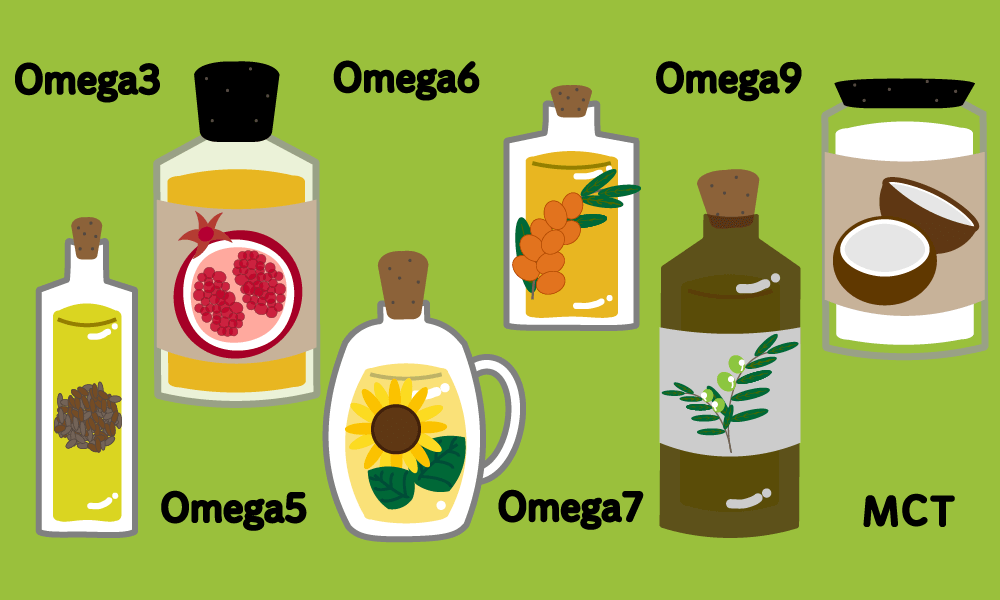
On this page, we will introduce various types of edible fats and oils, such as those that you can easily buy at supermarkets and rare fats and oils that can only be bought at specialty stores.
There are some oils that you can't get easily, but I hope you refer to this page to find the one that suits you!
※However, even with the same oil, the nutritional value and fatty acid ratio may differ slightly depending on the product!
Contents
Fats and oils high in saturated fatty acids
It is solid at room temperature and resistant to oxidation, but since there are many animal fats and oils, if you don't choose good quality fats and oils, you will increase the risk of arteriosclerosis, myocardial infarction, and cancer.
1. Cacao butter (Cocoa butter)
It is made from cocoa mass, which is the process of making chocolate from cocoa beans.
It has a melting point of about 34 degrees, which is lower than human body temperature.
Anti-aging with polyphenols, especially epicatechin, a polyphenol for arteriosclerosis and carcinogenesis prevention.
It also has a bactericidal effect on Helicobacter pylori, which settles in the gastrointestinal tract and causes gastritis and gastric ulcer.
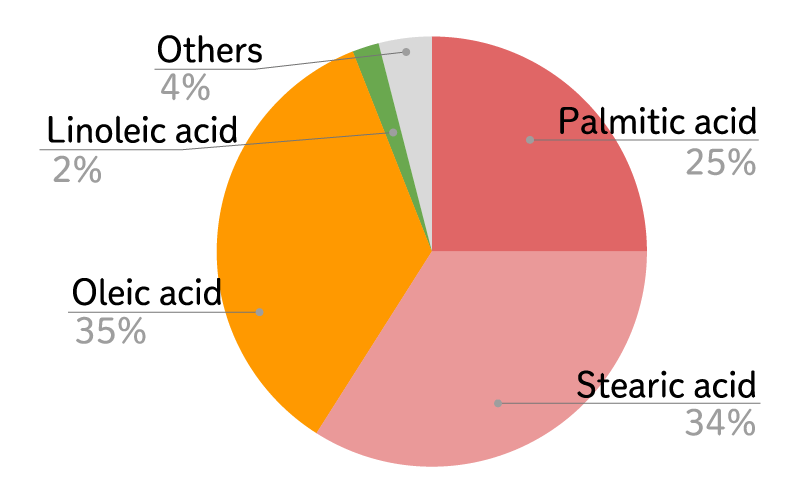
| Main fatty acids | Stearic acid, oleic acid, palmitic acid |
|---|---|
| Cooking | High temperature heating OK |
| Storage method | Dark and cool place |
| Taste / Aroma / Texture | Slightly chocolate scent, lighter than butter, thicker than coconut oil |
| Fat-soluble vitamins | VitaminE, VitaminK |
| Phytochemicals | Epicatechin |
2. Ghee
Fermented unsalted butter made from grass-fed milk is slowly heated to remove impurities.
It is rich in vitamins A, E, and D, has an antioxidant effect, and has a smoke point of 230 ° C, which is one of the highest among oils, so it is difficult to oxidize and can be stored for a long time.
It is characterized by having more medium-chain fatty acids and oleic acid than butter.
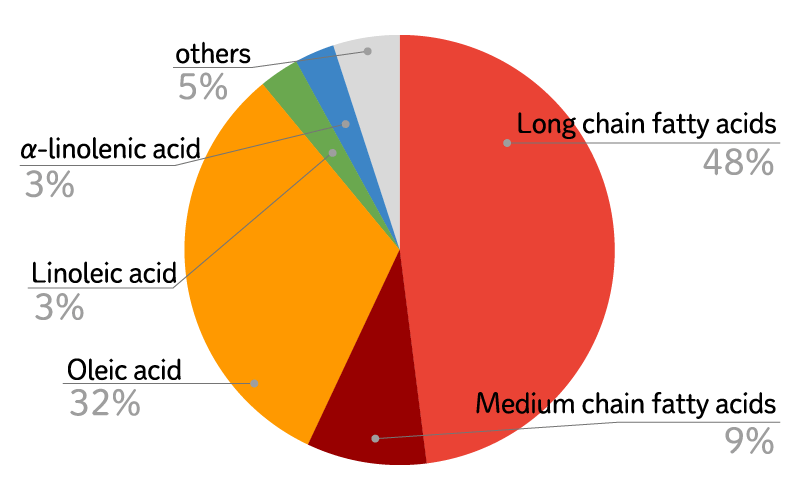
| Main fatty acids | Long chain fatty acids |
|---|---|
| Cooking | High temperature heating OK |
| Storage method | Dark and cool place |
| Taste / Aroma / Texture | Unique aroma like fermented butter, semi-solid and lighter than butter |
| Fat-soluble vitamins | VitaminA, VitaminE, VitaminD |
3. Coconut oil
Made from coconut seeds (endosperm). A medium-chain fatty acid-based oil, which is rare in vegetable oils.
It is hard to accumulate as fat in the body and is recommended for weight loss, prevention of dementia, and support for improvement. Lauric acid, the main ingredient, also has the effect of boosting immunity.
It goes well with the skin and is ideal for body cream if it is not sensitive.
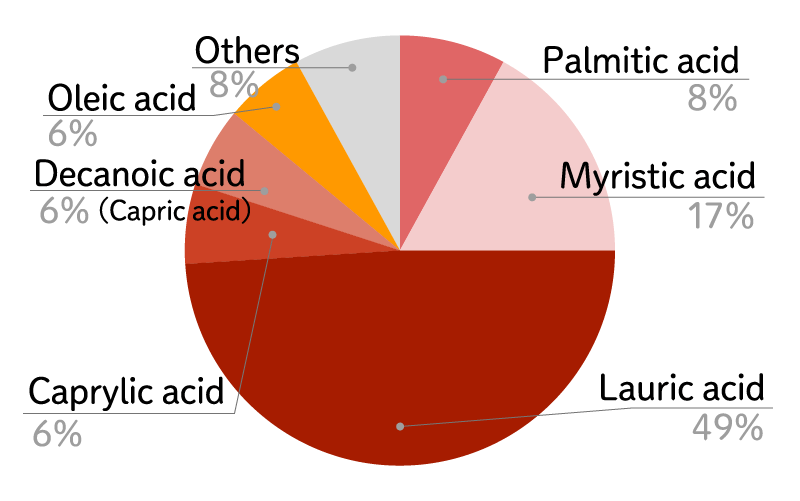
| Main fatty acids | Lauric acid |
|---|---|
| Cooking | High temperature heating OK |
| Storage method | Dark and cool place |
| Taste / Aroma / Texture | The taste and aroma are sweet and rich, and when melted, it is smooth. |
| Fat-soluble vitamins | VitaminE |
| Phytochemicals | Gaurimic acid |
4. Butter
An oil made by kneading cream separated from milk.
Although it is mainly composed of long-chain fatty acids, it isn't suitable for long-term high-temperature cooking because it oxidizes with many impurities.
Rich in Vitamin A to keep skin and mucous membranes healthy.
It has a richness peculiar to animals and is suitable for cooking and sweets.
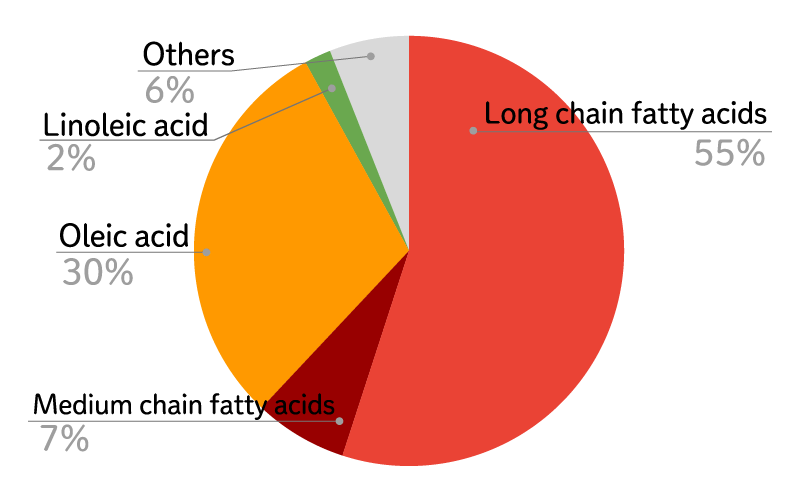
| Main fatty acids | Long chain fatty acids |
|---|---|
| Cooking | Heating OK (stir-fried food) |
| Storage method | Refrigerate |
| Taste / Aroma / Texture | Rich with a flavor peculiar to animals |
| Fat-soluble vitamins | VitaminA, VitaminE, VitaminD |
5. Palm oil
It is the second most consumed in the world. "Vegetable oil" is mostly palm oil. It is made from the fruits of oil palm, but the rainforest is decreasing due to the mass cultivation of oil palm.
Unusual as a vegetable oil, the main component is long-chain fatty acids. Very stable and hard to oxidize.
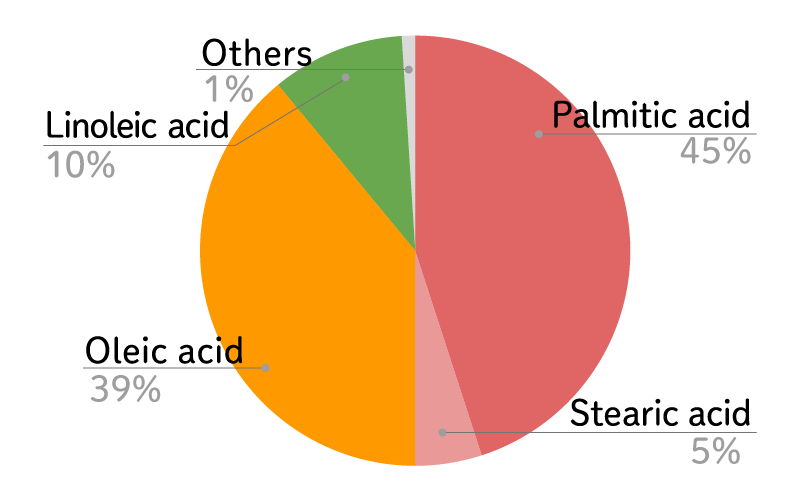
| Main fatty acids | Palmitic acid |
|---|---|
| Cooking | High temperature heating OK |
| Storage method | Dark and cool place |
| Taste / Aroma / Texture | Tasteless, odorless, semi-solid |
| Fat-soluble vitamins | VitaminE, VitaminK |
Fats and oils high in unsaturated fatty acids
It is liquid at room temperature and is often found in vegetable oils. Basically, it is sensitive to heat, light and air, and is easily oxidized. Essential fatty acids such as omega 6 and omega 3 are included here.
6. Apricot oil
Oil from apricot seeds.
Promotes skin turnover. Rich in oleic acid and vitamin A.
It is not very edible and is more often used as skin care.

| Main fatty acids | Oleic acid |
|---|---|
| Cooking | Heating OK (stir-fried food) |
| Storage method | Dark and cool place |
| Taste / Aroma / Texture | Slightly sweet and sour, smooth |
| Fat-soluble vitamins | VitaminA, VitaminE |
7. Avocado oil
Oil from avocado fruits, called forest butter.
It is easy to use because it is rich in oleic acid and doesn't have the scent of olive oil.
It is especially rich in phytochemicals that are good for eye disease prevention, such as lutein, which prevents cancer and night blindness, and β-carotene, which prevents cataracts and glaucoma.

| Main fatty acids | Oleic acid |
|---|---|
| Coooking | High temperature heating OK |
| Storage method | Dark and cool place |
| Taste / Aroma / Texture | Almost tasteless, odorless, thick and mellow |
| Fat-soluble vitamins | VitaminA, VitaminE |
| Phytochemicals | Lutein, β-carotene |
8. Flaxseed oil
Oil from flaxseed seeds.
It has the highest content of α-linolenic acid and is popular for ingesting omega 3, which tends to be deficient.
It improves the balance of cholesterol in the blood and makes the blood smoother, so it is effective in preventing lifestyle-related diseases.
In addition, lignans have a function similar to that of female hormones, so they are effective in preventing and alleviating cancer and PMS peculiar to women.
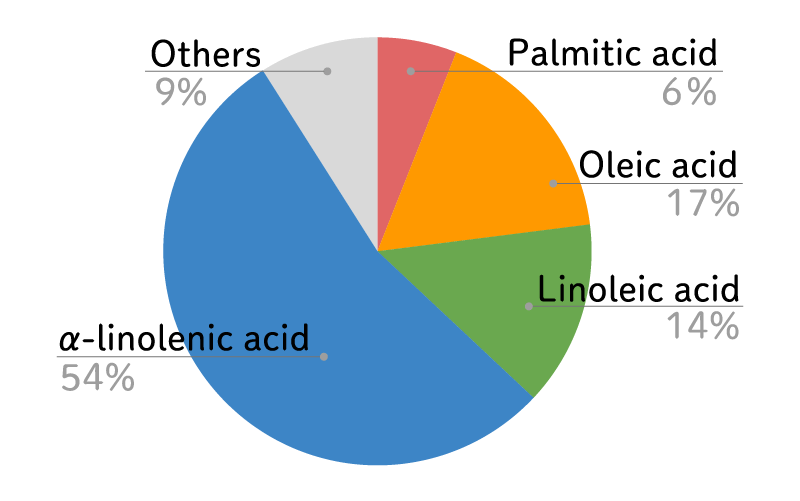
| Main fatty acids | α-linolenic acid |
|---|---|
| Cooking | No heating (eat raw) |
| Storage method | Refrigerate |
| Taste / Aroma / Texture | A little thick and astringent like walnuts |
| Fat-soluble vitamins | VitaminA, VitaminE |
| Phytochemicals | Pinoresinol, lariciresinol, secoisolasilesinol, β-carotene |
9. Almond oil
One of the foods with the highest content of vitamin E. The oil is also rich in vitamin E and has a high antioxidant effect.
It also contains phytochemicals in a well-balanced manner and is effective in preventing eye diseases and allergies.
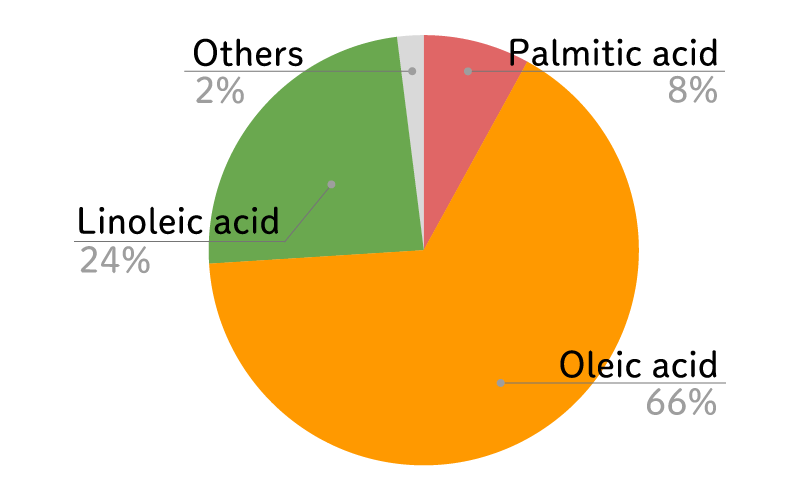
| Main fatty acids | Oleic acid |
|---|---|
| Cooking | Heating OK (stir-fried food) |
| Storage method | Dark and cool place |
| Taste / Aroma / Texture | Easy to use with no unique flavor |
| Fat-soluble vitamins | VitaminA, VitaminE |
| Phytochemicals | Quercetin, luteolin, resveratrol, β-carotene, zeaxanthin |
10. Argan oil
Only 1 liter of oil can be obtained from 100 kg of argan oil, which is a very rare oil.
An anti-aging oil rich in γ-tocopherol that is effective for swelling and fat burning.
Rich in fate chemicals with anti-inflammatory and anti-cancer antibacterial properties.
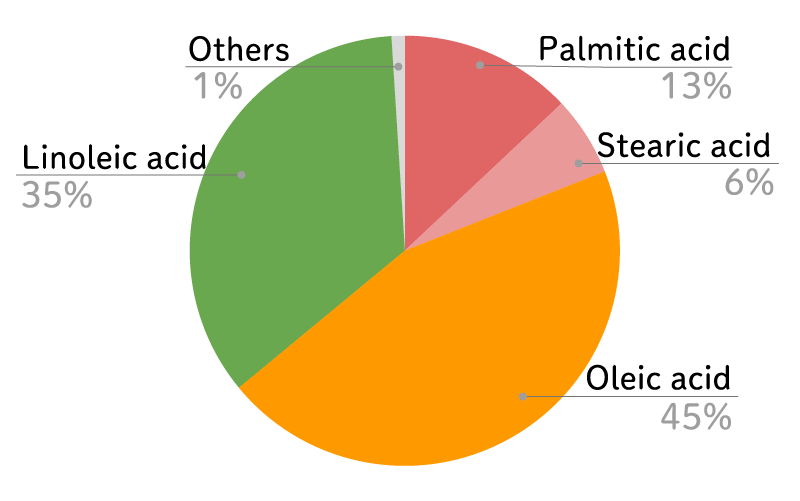
| Main fatty acids | Oleic acid |
|---|---|
| Cooking | Heating OK (stir-fried food) |
| Storage method | Dark and cool place |
| Taste / Aroma / Texture | Has a roasted nutty aroma, richness and bitterness |
| Fat-soluble vitamins | VitaminA, VitaminE, γ-Tocopherol |
| Phytochemicals | Caffeic acid, tilcarol, petitrospermol, ruperol, β-amyrin |
11. Perilla oil
Perilla oil is also popular because it contains α-linolenic acid, which is the top class and tends to be deficient in omega 3.
Prevents and alleviates lifestyle-related diseases and allergies with α-linolenic acid.
In addition, phytochemicals rosmarinic acid and luteolin also have an effect of suppressing aresgy, so it is recommended for people with pollinosis and allergic symptoms.
It goes well with Japanese food.

| Main fatty acids | α-linolenic acid |
|---|---|
| Cooking | No heating (eat raw) |
| Storage method | Refrigerate |
| Taste / Aroma / Texture | Fishy, greenish |
| Fat-soluble vitamins | VitaminE |
12. Olive oil
This is one of the most abundant omega-9 oleic acids, and has the effect of relieving constipation and balancing blood cholesterol.
Squalene also suppresses active oxygen.

| Main fatty acids | Oleic acid |
|---|---|
| Cooking | Heating OK (stir-fried food) |
| Storage method | Dark and cool place |
| Taste / Aroma / Texture | Fresh blue scent, bitter taste |
| Fat-soluble vitamins | VitaminE, VitaminK |
| Phytochemicals | Tannins, luteolin, oleuropein, oleocanthal, squalene, β-carotene |
13. Camellia oil
It has a higher oleic acid content than olive oil and is very low in linoleic acid, which is easily oxidized.
It has long been used in Japan to moisturize hair and skin.
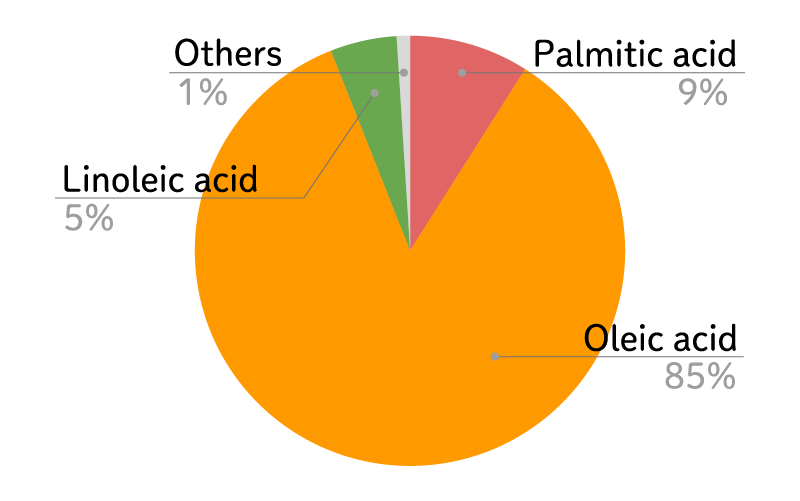
| Main fatty acids | Oleic acid |
|---|---|
| Cooking | Heating OK (stir-fried food) |
| Storage method | Dark and cool place |
| Taste / Aroma / Texture | Thick, slightly grassy scent |
| Fat-soluble vitamins | VitaminE |
14. Camelina oil
The proportion of α-linolenic acid is the highest among fatty acids alone, but omega-9 is the highest when oleic acid and icosenoic acid are combined. Omega 9, Omega 6, Omega 3 is well-balanced, and although it contains a lot of omega 3, it is hard to oxidize, so it is an easy-to-use oil.
Icosenoic acid is also useful for preventing arteriosclerosis and dementia.
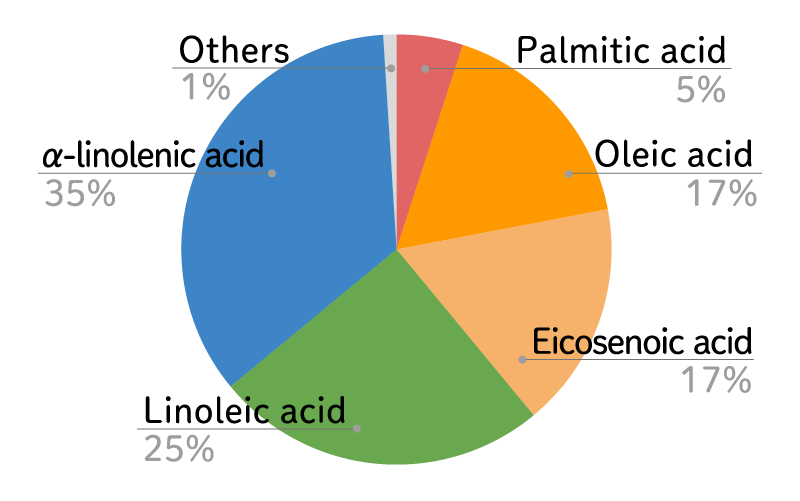
| Main fatty acids | α-linolenic acid |
|---|---|
| Cooking | Heating for a short time is OK (Light stir fry) |
| Storage method | Dark and cool place |
| Taste / Aroma / Texture | Blueness like asparagus, scent like nuts |
| Fat-soluble vitamins | VitaminE |
| Phytochemicals | β-carotene |
15. Walnut oil
A food that allows people who don't like the taste of nuts to get the nutrients of nuts.
Myricetin, a phytochemical, has anti-cancer, diabetes-preventing, and anti-allergic effects. Walnut polyphenols promote liver function.
Rich in minerals and has a detoxifying effect.
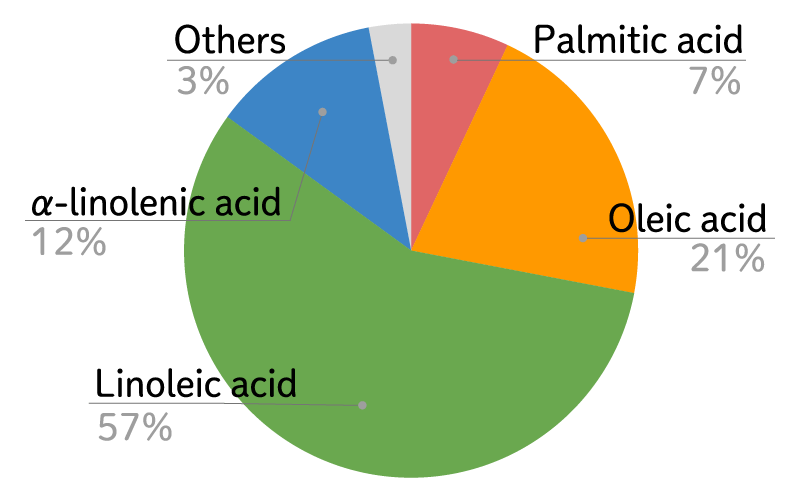
| Main fatty acids | Linoleic acid |
|---|---|
| Cooking | Heating for a short time is OK (Light stir fry) |
| Storage method | Refrigerate |
| Taste / Aroma / Texture | Slightly sweet, thick, walnut aroma, spicy astringency |
| Fat-soluble vitamins | VitaminE, α-tocopherol |
| Phytochemicals | Myricetin, pedanclagin, terimacrandin, ellagic acid |
16. Grape seed oil
Obtained from white wine grape seeds.
It is rich in polyphenols, which are also abundant in wine, and has a very high antioxidant effect, so it is useful for preventing cancer, antiallergies, and angiopathy.

| Main fatty acids | Linoleic acid |
|---|---|
| Cooking | Heating for a short time is OK (Light stir fry) |
| Storage method | Dark and cool place |
| Taste / Aroma / Texture | Smooth, light and odorless |
| Fat-soluble vitamins | VitaminE |
| Phytochemicals | Anthocyanidins, proanthocyanidins,resveratrol |
17. Sesame oil
Oil that has been used as for fragrances and treatments in ancient Egypt and Ayurveda
It has strong antioxidant power, and sesamin activates enzymes that promote fat burning, so it also supports weight loss and anti-aging.

| Main fatty acids | Linoleic acid, oleic acid |
|---|---|
| Cooking | Heating for a short time is OK (Light stir fry) |
| Storage method | Storage method |
| Taste / Aroma / Texture | Thick, rich scent of sesame |
| Fat-soluble vitamins | VitaminE |
| Phytochemicals | Sesamin, sesamolin, sesaminol, sesamol |
18. Wheat germ oil
It is an oil that can be obtained from wheat germ, but only 10 g of oil can be obtained from 1 kg of that germ.
It is rich in vitamin E so that it is said to be eating lotion, suppresses active oxygen, and is effective for beauty and aging prevention.
It can be heated for a short time, but it is better to take it raw.
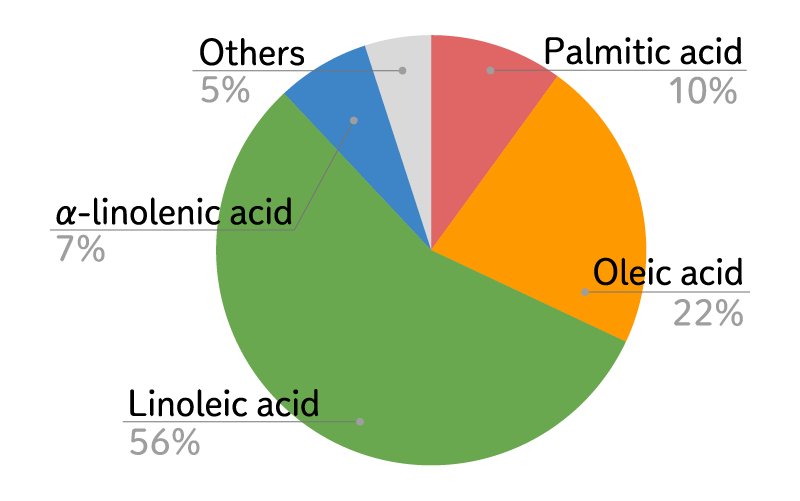
| Main fatty acids | Linoleic acid |
|---|---|
| Cooking | Heating for a short time is OK (Light stir fry) |
| Storage method | Dark and cool place |
| Taste / Aroma / Texture | Fragrance of grains |
| Fat-soluble vitamins | VitaminE |
19. Rice oil (rice bran oil, rice germ oil, rice bran oil, etc.)
It is an oil that can be taken from rice bran, and it doesn't smell or get sick even when cooked at high temperature.
The phytochemical γ-oryzanol regulates the autonomic nerves.
It is rich in vitamin E tocotrienols and has excellent antioxidant power.

| Main fatty acids | Oleic acid |
|---|---|
| Cooking | High temperature heating OK |
| Storage method | Dark and cool place |
| Taste / Aroma / Texture | Smooth and odorless, with a slight sweetness of rice |
| Fat-soluble vitamins | VitaminE, tocotrienols |
| Phytochemicals | γ-oryzanol |
20. Pomegranate seed oil
This oil, which is obtained from pomegranate seeds, is mainly composed of the very rare omega 5 punicic acid.
Since punicic acid is an important component that makes cell membranes, it can be expected to have all kinds of effects such as anti-cancer, antioxidant, anti-allergic, and improved sensitivity to cold.
Phytochemicals adjust the balance of female hormones, such as alleviating menopausal symptoms.

| Main fatty acids | Punicic acid |
|---|---|
| Cooking | Heating OK (stir-fried food) |
| Storage method | Dark and cool place |
| Taste / Aroma / Texture | Unique aroma and bitterness |
| Fat-soluble vitamins | VitaminE, VitaminK |
| Phytochemicals | Anthocyanidins, proanthocyanidins, resveratrol, cumesterols, ellagic acid |
21. Sacha inchi oil (Inca inchi seed oil, green nut oil)
Omega 3 oil that can be heated and does not need to be refrigerated.
It is also called inner beauty oil because the abundant vitamin E γ-tocopherol removes active oxygen and promotes metabolism.

| Main fatty acids | α-linolenic acid |
|---|---|
| Cooking | Heating for a short time is OK (Light stir fry) |
| Storage method | Dark and cool place |
| Taste / Aroma / Texture | Smooth, bluish aroma and bitterness like green beans |
| Fat-soluble vitamins | Vitamin E, γ-tocophenol, tocotrienol |
| Phytochemicals | Quercetin, β-carotene |
22. Safflower oil
Traditional safflower oil.
Oil with 70% or more linoleic acid. Not very suitable for heating.

| Main fatty acids | Linoleic acid |
|---|---|
| Cooking | Heating OK (stir-fried food) |
| Storage method | Dark and cool place |
| Taste / Aroma / Texture | Smooth and almost unique scent |
| Fat-soluble vitamins | Vitamin E |
23. Safflower oil (High Oleic)
Currently, most of them have been improved to increase the amount of oleic acid.
It suppresses the secretion of gastric acid and prevents gastrointestinal disorders such as gastric ulcer.

| Main fatty acids | Oleic acid |
|---|---|
| Cooking | Heating OK (stir-fried food) |
| Storage method | Dark and cool place |
| Taste / Aroma / Texture | Smooth and almost unique scent |
| Fat-soluble vitamins | Vitamin E |
| Phytochemicals | Bearloyl serotonin, feruloyl serotonin, β-carotene |
24. Sea buckthorn oil
Oil from miracle fruit sea buckthorn containing over 200 nutrients.
Omega 7's palmitoleic acid is abundant and strengthens blood vessels, so it is useful for preventing angiopathy.
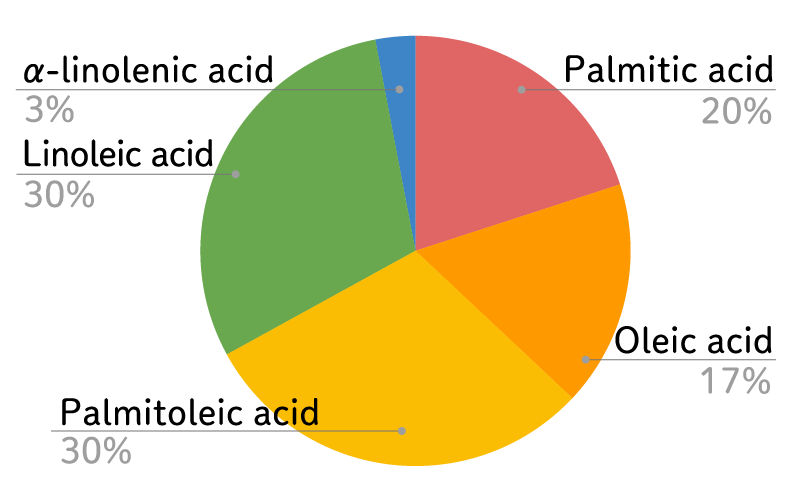
| Main fatty acids | Palmitoleic acid |
|---|---|
| Cooking | No heating (eat raw) |
| Storage method | Refrigerate |
| Taste / Aroma / Texture | Unique taste and aroma |
| Fat-soluble vitamins | Vitamin A, Vitamin E |
| Phytochemicals | Quercetin |
25. Tiger nut oil
Oil from superfood tiger nuts.
It is said that vitamin E is higher than almonds. Rich in oleic acid and less likely to oxidize, improving bowel movements.

| Main fatty acids | Oleic acid |
|---|---|
| Cooking | High temperature heating OK |
| Storage method | Dark and cool place |
| Taste / Aroma / Texture | A slightly sweet and earthy scent |
| Fat-soluble vitamins | Vitamin E |
26. Soybean oil
Since it contains a lot of linoleic acid and is easily oxidized, it isn't suitable for cooking.
Since the oil content of soybeans is low, most of the extraction methods use hexane, so I don't recommend it.
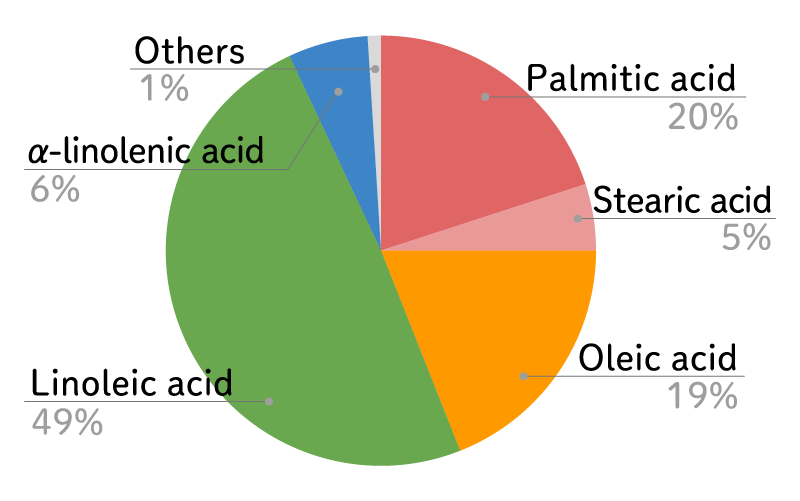
| Main fatty acids | Linoleic acid |
|---|---|
| Cooking | Heating for a short time is OK (Light stir fry) |
| Storage method | Dark and cool place |
| Taste / Aroma / Texture | Almost tasteless and odorless |
| Fat-soluble vitamins | Vitamin E, Vitamin K |
27. Chia seed oil
An oil from superfoods and chia seeds, one of the most minerals and phytochemicals in foods.
For anti-allergic action and prevention of lifestyle-related diseases.
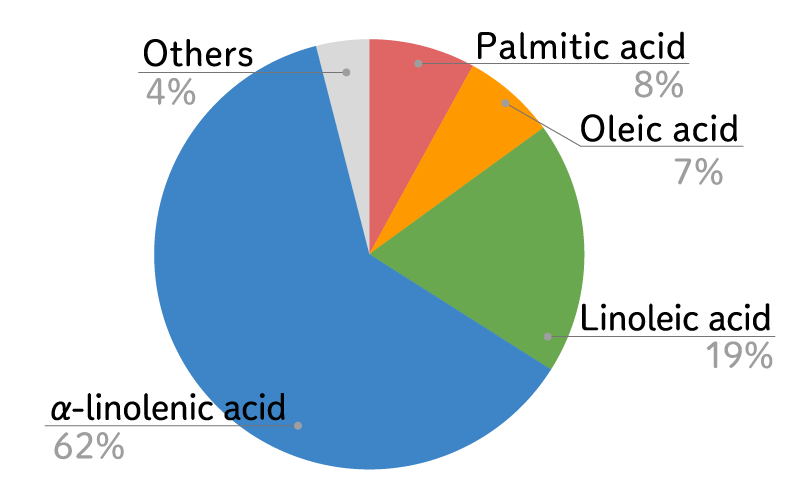
| Main fatty acids | α-linolenic acid |
|---|---|
| Cooking | Heating for a short time is OK (Light stir fry) |
| Storage method | Refrigerate |
| Taste / Aroma / Texture | Smooth and slightly blue scent |
| Fat-soluble vitamins | Vitamin E |
| Phytochemicals | Quercetin, myricetin, rosmarinic acid, caffeic acid, gallic acid |
28. Evening Primrose Oil
It is an oil that is mostly linoleic acid, but it is a valuable food that contains γ-linolenic acid contained in breast milk.
Adjusts the balance of female hormones and relieves PMS and menopausal symptoms. Phytochemicals suppress the rise of blood sugar level and the growth of Helicobacter pylori.
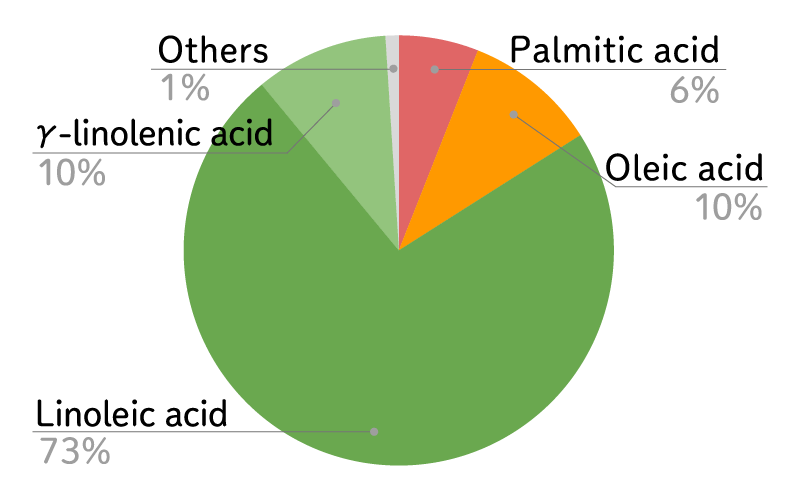
| Main fatty acids | Linoleic acid |
|---|---|
| Cooking | No heating (eat raw) |
| Storage method | Refrigerate |
| Taste / Aroma / Texture | Smooth and light, almost odorless |
| Fat-soluble vitamins | Vitamin E |
| Phytochemicals | Proanthocyanidins, gallic acid, ellagic acid, pentagalloyl glucose |
29. Tea oil
Oil that is also used in Chinese medicine.
The phytochemical saponin has anti-inflammatory and alcohol absorption inhibitory effects.

| Main fatty acids | Oleic acid |
|---|---|
| Coooking | Heating OK (stir-fried food) |
| Storage method | Dark and cool place |
| Taste / Aroma / Texture | Not unique |
| Fat-soluble vitamins | Vitamin E |
| Phytochemicals | Saponin, β-carotene |
30. Corn oil
It is taken from the germ that comes out when making cornstarch from corn. About 1 liter of oil can be obtained from 100 kg of corn.
I don't recommend the extraction method as most use hexane.
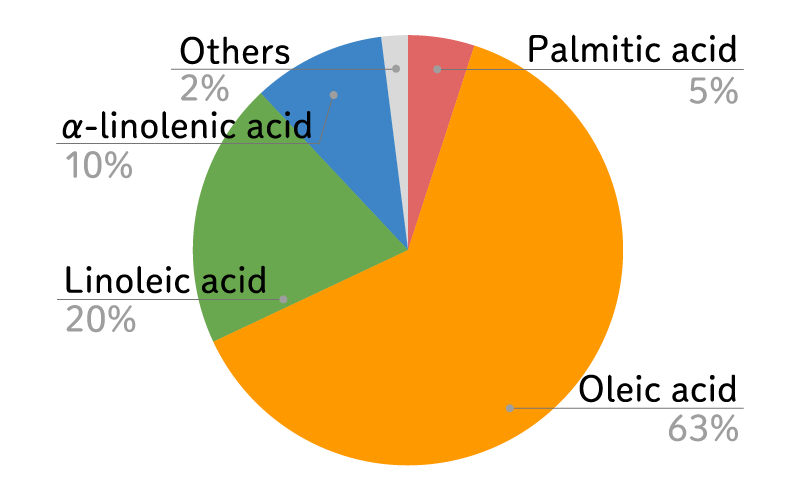
| Main fatty acids | Linoleic acid |
|---|---|
| Cooking | Heating for a short time is OK (Light stir fry) |
| Storage method | Dark and cool place |
| Taste / Aroma / Texture | Almost tasteless and odorless |
| Fat-soluble vitamins | Vitamin E |
31. Old rapeseed oil
In the olden days, rapeseed oil was rich in erucic acid, which is said to be a harmful fatty acid.
However, some studies have shown that erucic acid is not actually harmful.
Currently, it is rarely distributed worldwide.
32. Current rapeseed oil
A rapeseed oil that has been bred to eliminate erucic acid. There are Kizakin rapeseed, Asakano rapeseed, and nanahushiigi rapeseed.
An oil that contains a lot of oleic acid and has a high smoke point, so it can be used daily, such as stir-fried foods and fried foods.

| Main fatty acids | Oleic acid |
|---|---|
| Cooking | High temperature heating OK |
| Storage method | Dark and cool place |
| Taste / Aroma / Texture | A little thick and rich |
| Fat-soluble vitamins | Vitamin E |
33. ※Canola oil
The raw material is rapeseed, but in order to keep costs down, genetically modified and hexane-based extraction methods are common.
Basically, it is better not to use it because some colors and vitamins are added.
34. Coix seed oil
Oil from Coix seeds.
It is not very edible and has been effective for treating warts and whitening for a long time. It has an excellent antioxidant effect and also protects the skin from ultraviolet rays.
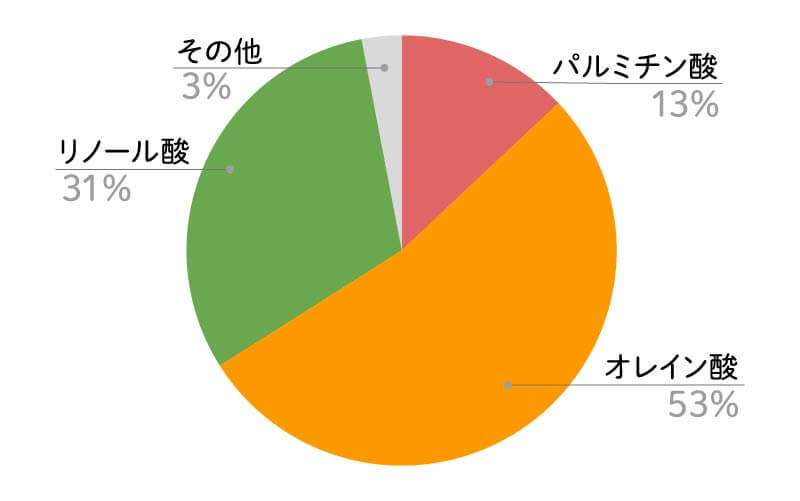
| Main fatty acids | Oleic acid |
|---|---|
| Storage method | Dark and cool place |
35. Pumpkin seed oil
Oil from pumpkin seeds used on Halloween. It needs about 35 pumpkins to make 1 liter of oil.
Phytochemicals are effective for diuretic problems and allergies.
It is also famous as a skin care oil, and is also used for prevention and improvement of stretch marks and anti-aging.

| Main fatty acids | Linoleic acid |
|---|---|
| Cooking | Heating for a short time is OK (Light stir fry), ※Raw is recommended |
| Storage method | Refrigerate |
| Taste / Aroma / Texture | Thick but light, fragrant, bitter and natural sweetness |
| Fat-soluble vitamins | Vitamin A, Vitamin E, γ-Tocopherol, Vitamin K |
| Phytochemicals | Rosmarinic acid, β-carotene |
36. Pistachio oil
An oil from a nutritious pistachio called the Nut Queen.
A rare oil containing vitamins A, E and K that has a high antioxidant effect and is suitable for anti-aging.
It is rich in minerals and phytochemicals and can be expected to have various effects such as anemia, lifestyle-related diseases, and prevention of eye diseases.
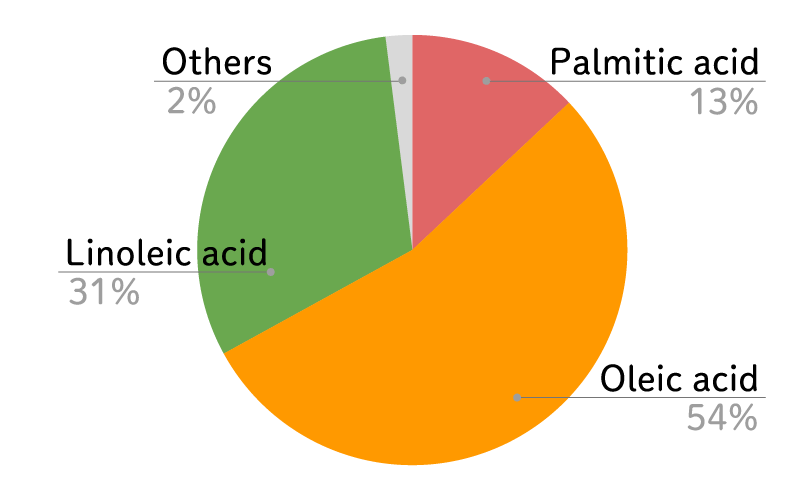
| Main fatty acids | Oleic acid |
|---|---|
| Cooking | Heating for a short time is OK (Light stir fry), ※Raw is recommended |
| Storage method | Dark and cool place |
| Taste / Aroma / Texture | Thick, pistachio scent and richness, astringency of the skin |
| Fat-soluble vitamins | Vitamin A, Vitamin E, Vitamin K |
| Phytochemicals | Anthocyanidins, proanthocyanidins, resveratrol, quercetin, luteolin, beta-carotene, lutein |
37. Sunflower oil
Ordinary sunflower oil.
An oil that contains 60% or more of linoleic acid and isn't very suitable for heating.
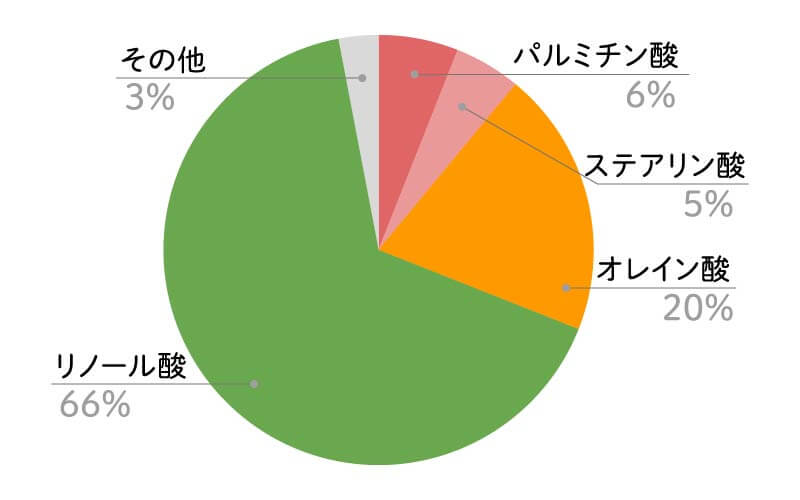
38. Sunflower oil (High Oleic)
オMost of these are sunflower oils that have been bred to be rich in oleic acid.
Phytochemicals have the effect of balancing female hormones.
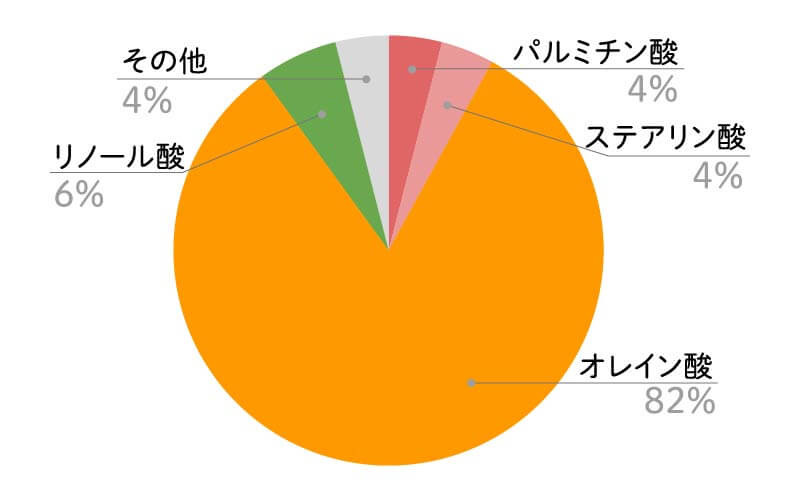
| Main fatty acids | Oleic acid |
|---|---|
| Cooking | Heating OK (stir-fried food) |
| Storage method | Dark and cool place |
| Taste / Aroma / Texture | Almost tasteless and odorless |
| Fat-soluble vitamins | Vitamin E |
| Phytochemicals | Coumestan, β-carotene |
39. Black cumin seed oil
Oil that is said to "cure all illnesses except death".
It is quite nutritious and contains unique nutrients.
It isn't good to use a lot because it contains a lot of linoleic acid, but it is also effective for anti-inflammatory, analgesic, antipyretic and Alzheimer's dementia.
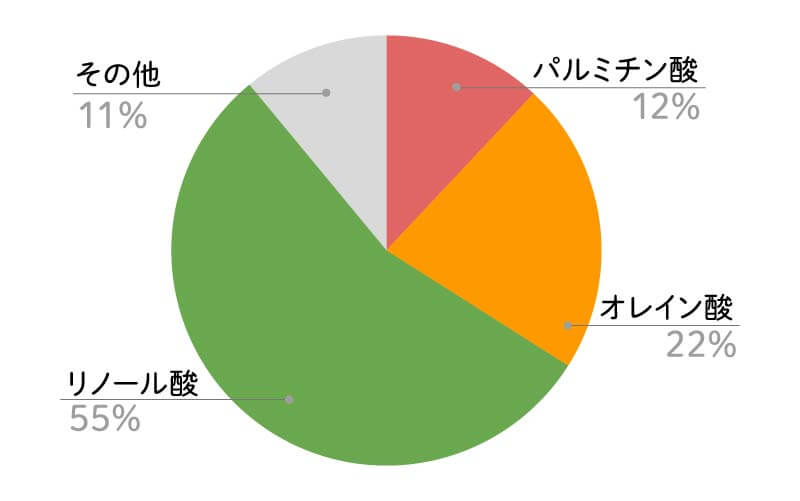
| Main fatty acids | Linoleic acid |
|---|---|
| Cooking | No heating (eat raw) |
| Storage method | Refrigerate |
| Taste / Aroma / Texture | Both taste and aroma are quite unique |
| Fat-soluble vitamins | Vitamin A, Vitamin E |
| Phytochemicals | Nigeron, thymoquinone |
40. Prune seed oil
It has a higher vitamin E content than olive oil and avocado oil.
There are many phytochemicals that have antioxidant properties, so it is suitable for anti-aging.
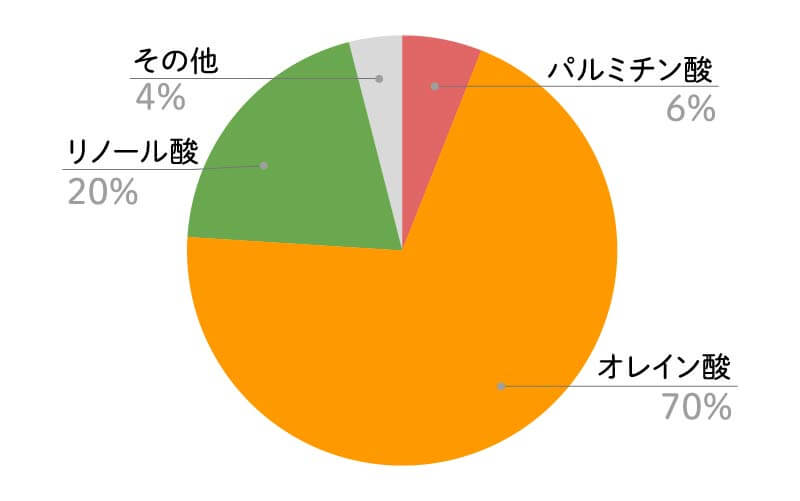
| Main fatty acids | Oleic acid |
|---|---|
| Cooking | Heating OK (stir-fried food) |
| Storage method | Dark and cool place |
| Taste / Aroma / Texture | Thick, mellow, almond-like flavor |
| Fat-soluble vitamins | Vitamin E |
| Phytochemicals | Anthocyanins, proanthocyanidins, resveratrol, β-carotene |
41. Hazelnut oil
Roasted and squeezed hazelnuts, so it's a fragrant oil.
The content of palmitoleic acid varies depending on the country of origin.

| Main fatty acids | Oleic acid |
|---|---|
| Cooking | Heating OK (stir-fried food) |
| Storage method | Dark and cool place |
| Taste / Aroma / Texture | Fragrant and slightly sweet |
| Fat-soluble vitamins | Vitamin E |
| Phytochemicals | Proanthocyanidins, resveratrol, quercetin, myricetin, lutein, zeaxanthin |
42. Hemp seed oil
Omega 6 and Omega 3 well-balanced oil.
It also contains γ-linolenic acid to prevent diabetes and blood clots.
Phytochemicals have the effect of removing active oxygen.

| Main fatty acids | Linoleic acid |
|---|---|
| Cooking | No heating (eat raw) |
| Storage method | Refrigerate |
| Taste / Aroma / Texture | Thick and rich, with a lush aroma and a bit of astringency |
| Fat-soluble vitamins | Vitamin E |
| Phytochemicals | Kannabisin |
43. Borage oil
Oil that has been used for food, lamps, medical treatment, oil painting, etc. since ancient times.
Effective for cancer treatment support and insomnia.
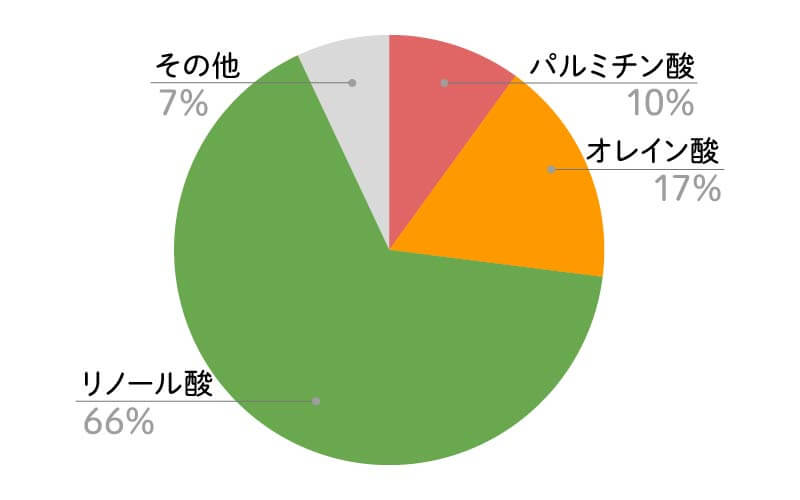
| Main fatty acids | Linoleic acid |
|---|---|
| Cooking | Heating for a short time is OK (Light stir fry) |
| Storage method | Dark and cool place |
| Taste / Aroma / Texture | A little fragrant |
| Fat-soluble vitamins | Vitamin E |
44. Borage oil
It has a high content of γ-linolenic acid and is effective in alleviating symptoms peculiar to women such as PMS and menopausal symptoms.
It is also effective in improving depression.
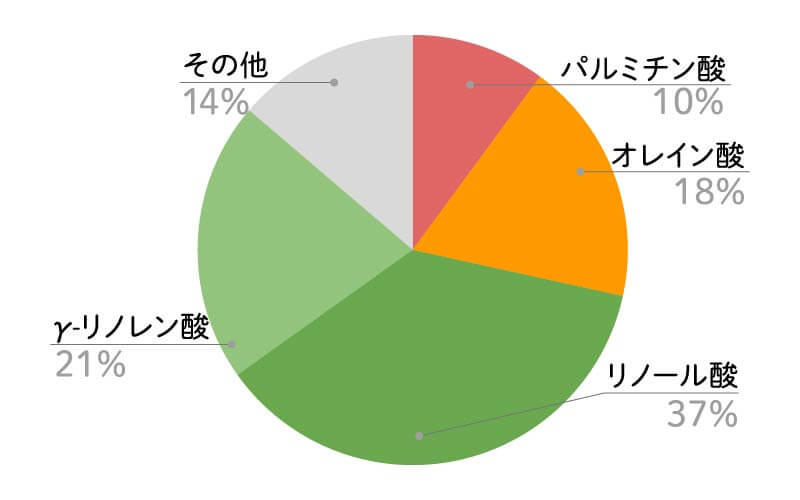
| Main fatty acids | Linoleic acid |
|---|---|
| Cooking | No heating (eat raw) |
| Storage method | Refrigerate |
| Fat-soluble vitamins | Vitamin E |
45. Macadamia nut oil
It contains a lot of oleic acid and palmitoleic acid and has the effect of strengthening blood vessels.
It also promotes insulin secretion, which helps prevent diabetes.
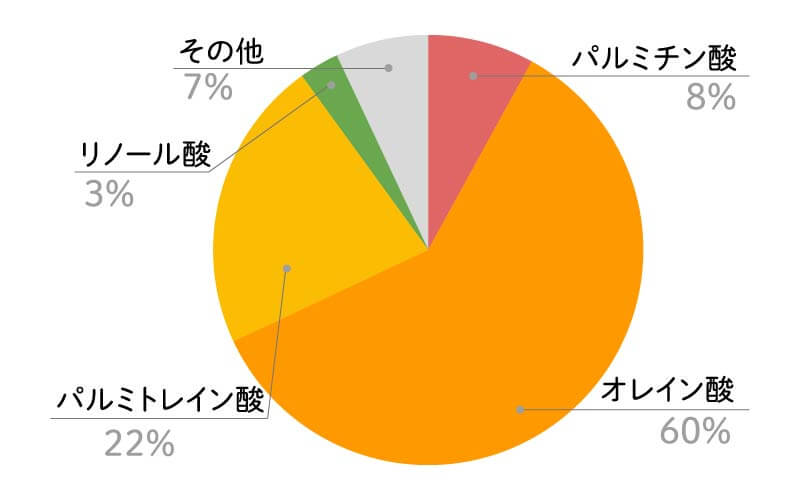
| Main fatty acids | Oleic acid |
|---|---|
| Cooking | Heating OK (stir-fried food) |
| Storage method | Dark and cool place |
| Taste / Aroma / Texture | Slightly sweet, roasted type has aroma and taste of nuts |
| Fat-soluble vitamins | Vitamin E |
| Phytochemicals | Anthocyanidins, proanthocyanidins, resveratrol |
46. Pine nut oil (pine seed oil)
It contains a very rare fatty acid, pinolenic acid, and has anti-inflammatory action and suppresses itching, so it is useful for allergic and atopic symptoms.
It also has an appetite-reducing effect, so it can also be used to support weight loss.
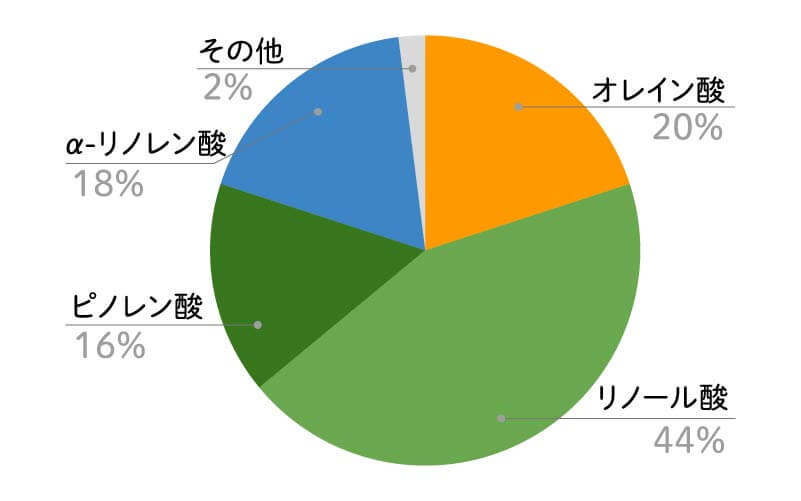
| Main fatty acids | Linoleic acid |
|---|---|
| Cooking | No heating (eat raw) |
| Storage method | Refrigerate |
| Taste / Aroma / Texture | Fragrance of nuts |
| Fat-soluble vitamins | Vitamin A, Vitamin E |
47. Cottonseed oil
Oil that goes well with deep fried foods.
I don't recommend because the extraction method using genetic modification or hexane is common.
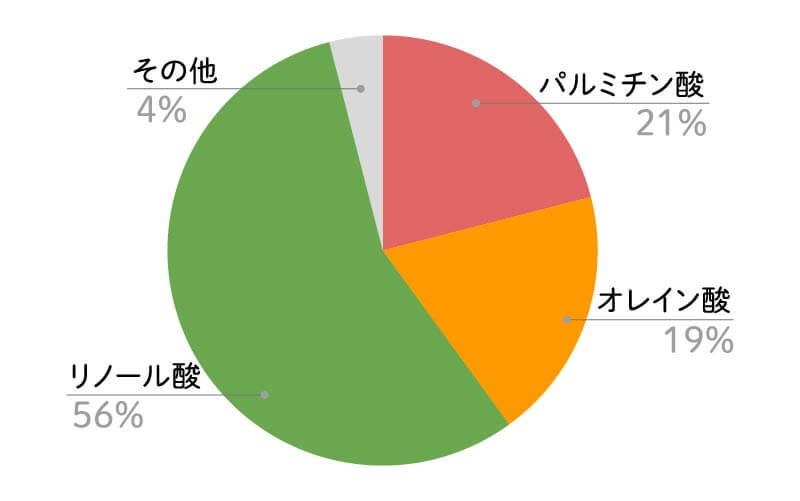
| Main fatty acids | Linoleic acid |
|---|---|
| Cooking | Heating OK (stir-fried food) |
| Storage method | Dark and cool place |
| Taste / Aroma / Texture | Refreshing acidity, mellow |
| Fat-soluble vitamins | Vitamin E, Vitamin K |
48. Yuzu seed oil
Only 1 ml of oil can be taken from 40 Yuzu seeds.
Citrus-based phytochemicals have antibacterial, antitumor, antiallergic, and bone density reduction inhibitory effects.

| Main fatty acids | Oleic acid, linoleic acid |
|---|---|
| Cooking | Heating OK (stir-fried food) |
| Storage method | Dark and cool place |
| Taste / Aroma / Texture | Almost tasteless and odorless |
| Fat-soluble vitamins | Vitamin A, Vitamin E |
| Phytochemicals | Naringenin, hesperetin, β-carotene, limonoids |
49. Peanut oil
It is often used in Chinese food because it prevents stomach upset. It also has antioxidant and anti-allergic effects.
Be careful if you are allergic to peanuts.
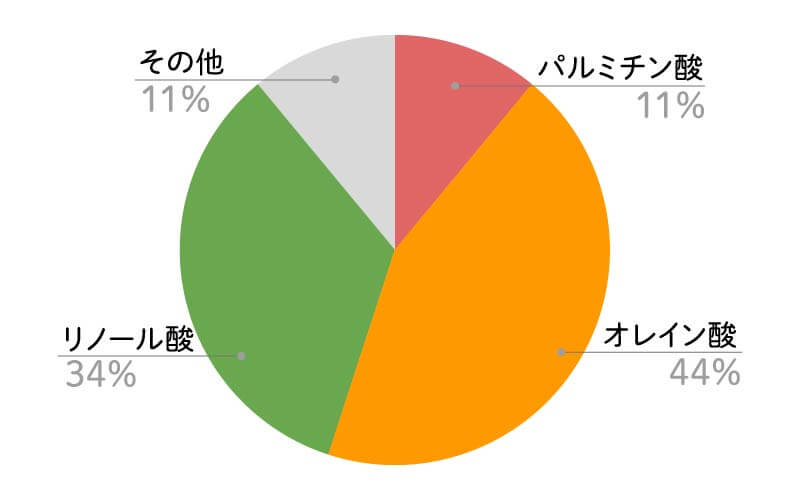
| Main fatty acids | Oleic acid |
|---|---|
| Cooking | High temperature heating OK |
| Storage method | Dark and cool place |
| Taste / Aroma / Texture | The scent of peanuts and the astringency of the skin |
| Fat-soluble vitamins | Vitamin A, Vitamin E |
| Phytochemicals | Anthocyanidins, proanthocyanidins, resveratrol, quercetin, luteolin, β-carotene, lutein, zeaxanthin |
50. Rosehip oil
It is an oil obtained from rose seeds and has a very high content of vitamin C, and has been used for cold remedies.
Phytochemicals have high antioxidative effects, arteriosclerosis, cancer prevention, and other cosmetic effects such as whitening and improvement of wrinkles.
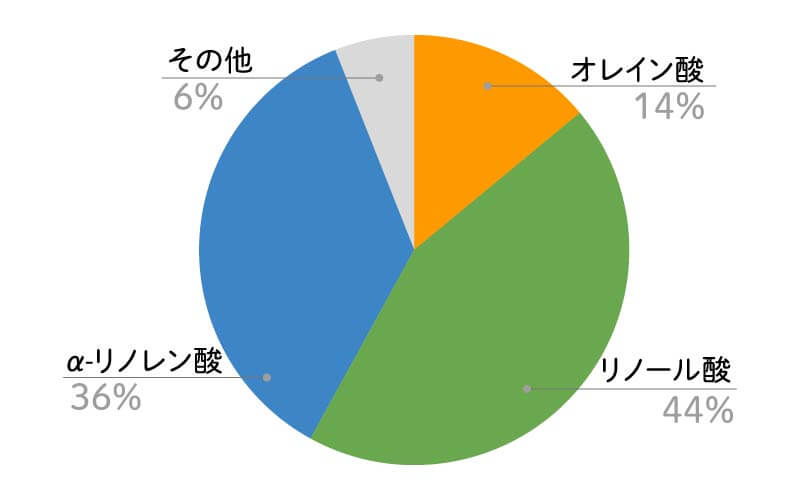
| Main fatty acids | Linoleic acid |
|---|---|
| Cooking | No heating (eat raw) |
| Storage method | Refrigerate |
| Taste / Aroma / Texture | A slightly orange-like scent |
| Fat-soluble vitamins | Vitamin A, Vitamin E |
| Phytochemicals | Tiliroside, anthocyanidins, proanthocyanidins, quercetin, hesperetin, caffeic acid, β-carotene, lycopene |
51. ※Salad oil / blended salad oil
Salad oil is a general term for rapeseed oil, soybean oil, corn oil, sunflower oil, sesame oil, safflower oil, cottonseed oil, rice oil, grape oil, etc.
Formulated salad oil (Mixed oil) is a mixture of the above two or more types.
Salad oil is used for various cooking such as stir-fried foods and deep fried foods, but since it is originally eaten with salad (raw food), it also contains oils that aren't suitable for high-temperature heating.
Salad oil is a cheap genetically modified food-based extraction method that uses hexane. Therefore, it is better not to use it because some of them have added colors and vitamins.

